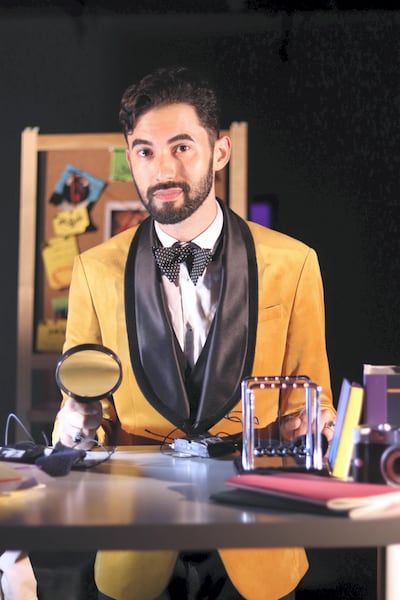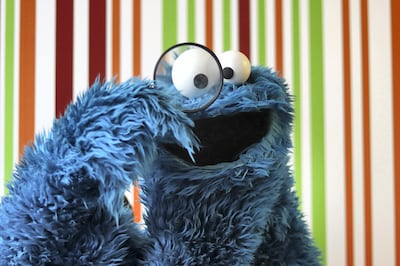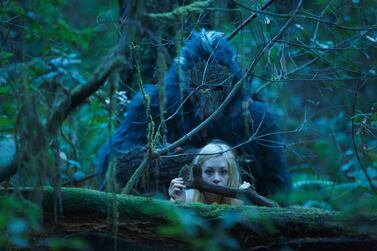Iftah Ya Simsim, the Arab world's very own adaptation of the global kids' TV success Sesame Street, returns to screens over Ramadan with a new, 52-episode third season that promises more fun, games and informative entertainment from Elmo, Cookie Monster and local characters such as Shams and Noman.
The show originally screened in the region as a Kuwaiti-made affair from 1979 to 1990, with the current revival initially mooted in 2010, and entering pre-production in 2013. The first series of the reboot, produced by Abu Dhabi-based Bidaya Media, screened in 2015, and by the time the third season has aired there will have been more than 200 episodes of the evergreen show in its current format.
While many of the key faces (and puppeteer’s hands) both on screen and behind the scenes have remained constant since the show’s earliest days, one new face on set this time around is artistic director Amr Dia, who is responsible for the show’s visual direction, as well as designing and creating the colourful sets, props and costumes.
Dia may be the new boy having joined the team last year, but he already seems to have settled happily into the Iftah Ya Simsim family.

“It really is an honour to work here, because you realise it’s not just a job. It’s more than that, you really affect people’s lives in many different ways,” he says. “I’m not just talking about kids today, though of course we love them, but in past, too. You’ll meet people today, wearing a full kandura and looking very serious and sophisticated, and when they see the characters they get so giddy like a little boy. The show has this really rare familial vibe that connects across the generations.”
Of course, being part of such an iconic show also has its own set of challenges, not least that a huge global brand like Sesame Street comes with a distinct set of rules that must be adhered to, wherever you are making the show.
“It is a challenge, too, because it’s such a huge cultural phenomenon, so you can’t be totally left to your own devices,” Dia admits. “You have to be true to the brand and do it justice. Elmo, Cookie Monster and Grover you can’t mess with. But we do create our own characters like Shams and Noman, our version of Big Bird.
"You get a lot of freedom, too. Some things are fixed, like you can’t have Elmo on a red background because of the clash, but generally we have a lot of creative freedom. We all understand that we’re one team, and there’s an extensive brown book of information that I’ve read in detail. Ultimately though, they [Children’s TV Workshop, the show’s US creators] always say, ‘if you want to try something new, do’. It’s not like they’re micromanaging us all the time.”

For Dia, his latest role sounds like a dream come true. The artist originally trained as a classical painter, but he admits that he was never entirely convinced he would be able to use his talents as anything more than a hobby.
“I never thought it was a potential career I could follow, so the fact this just sort of fell into my lap really was a blessing,” he says. “I never expected to be doing something like this. I think it was the same for the puppeteers. People only ever used to do things like that as a hobby. It just proves that you can find an outlet for your talents, and if there isn’t one, create one. Get together with other people and start something.”
Having achieved his dream, Dia now hopes to spread his positive experiences to the kids who watch the show, as well as those who appear in it.
“We were shooting with some kids one day and they were talking about how much they loved the props, so I said to them, ‘well, one day you could be an art director, too,’” he recalls. “I’d never really heard that in my life, and I think it’s important to let kids know that you really can be anything. Where there’s a will there’s always a way.”
One person who was central to establishing this unexpected career opportunity making props was Bidaya’s managing director and educational consultant, Cairo Arafat. She has worked on the show since it first went into pre-production, and says the talent pool was limited when she arrived on set.
“We had to spend about two years developing the talent pool, because there simply weren’t puppeteers and specialised kids’ music writers here,” she reveals.
Arafat was determined that the roles should be filled locally, and this extended beyond the set. “It was important to us have local talent because we wanted kids to look at the screen and see themselves in it, not always be looking at the 'other'. It wasn’t just the talent, either; there was no real history of 'edutainment' here. The Arabic education system is very traditional, so we had to develop and research and build partnerships with schools and institutions as this was a fairly alien concept.”
Arafat adds that the learning process has continued throughout the show’s production. Perhaps the biggest lessons have come from adapting to the growing popularity of digital platforms, meaning that the notion of a child sitting down to watch a 30-minute TV show is increasingly uncommon. As a result, the producers have increasingly been moving towards breaking up the show into a higher number of shorter segments, rather than the three 10-minute sections of season one.
Dia adds that we can expect a few other novelties in season three, too. “We have a new set for this series. We’ve still got the old library, but we’ve added a new home set, added some more details, and it’s a bit bigger. It’s maybe a little bit more grown-up, with not so much loud colour; we’ve toned down a little, but still keeping in line with the younger audience,” he explains. “There’s also a bit more comedy with this series, there have always been elements of humour to the show, but I think it’s a little more this time.”
The artistic director adds that we can expect a nod to the time of year in the season's early episodes.
“We’re not putting any special stories in specifically for Ramadan because that’s not really the route we take creatively, but there are some Ramadan-esque touches,” he explains. “We’ll have a game show element, so parents and kids can watch together, that’s always quite popular at Ramadan. People will already be in that spirit, but we think by introducing some elements of that kind of traditional Ramadan programming, we can encourage families to watch together.”
Iftah Yah Simsim will begin broadcasting today on Majid TV, Spacetoon, Baynounah and Sharjah TV. Check channel listings for further details.





